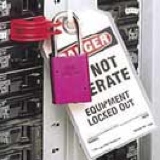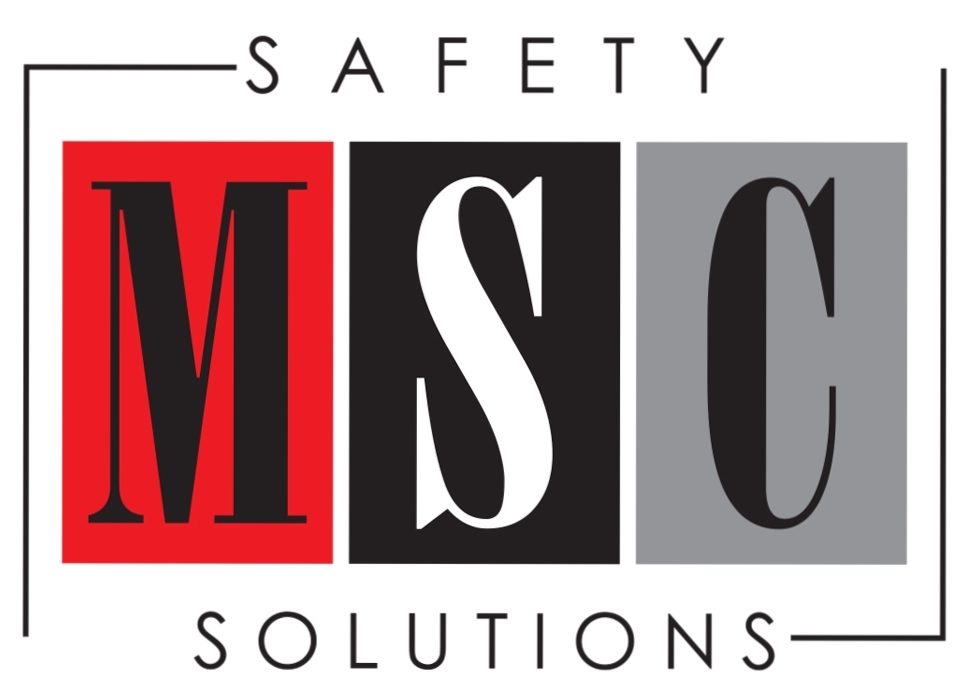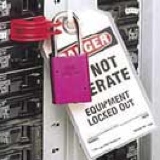Information
-
Document No.
-
Audit Title
-
Client / Site
-
Conducted on
-
Prepared by
-
Location
-
Personnel
-
Audit start time
-
Audit completion time
-
Auditors summary
A - Previous inspection
-
Has the last inspection been reviewed, items corrected and documented?
Office area
-
Issues observed in this section were:
-
Aisles, walkways, and work areas are free of trip and fall hazards (i.e. torn carpets, turned up edges of door mats, boxes etc.)
-
Exit paths are free of boxes/materials at all times
-
Illuminated exit and emergency lighting working properly?
-
Work and storage areas are free of improper storage (e.g., heavy, high and/or unstable storage)
-
36” clearance is maintained in front of all electrical panels and fire extinguishers
-
Electrical cords and plugs are in good condition (i.e., not frayed, taped, spliced, or ground prong missing)
-
Computer work stations and work area are ergonomically correct and workers are working safely
1.0 Control of hazardous energy - Lockout Tagout 1910.147
-
Issues observed in this section were:
-
Are the proper LOTO devices available for all energy sources available?
-
Do you have an authorized person perform a periodic inspection of your energy control procedures at least annually?
-
Is there a written LOTO program of procedures, training, and periodic inspections
2.0 Chemical handling and storage 1910.120
-
Issues observed in this section were:
-
Are open drums and containers stored on spill containment pallets or pans.
-
Are employees using the proper PPE for the chemicals they are handling such as Nitrile gloves, goggles, safety glasses or face shields??
-
If applicable Is there a spill plan in place with sufficient spill response supplies?
3.0 Chemical - RTK and GHS compliance - MSDS 1910.1200
-
Issues observed in this section were:
-
Have employees been trained on hazard communication and the new GHS "employee right to understand" system
-
MSDS / SDS book is up to date (annual inventory of chemicals), accessible, and well organized.
4.0 Compressed gas 1910 Subpart M
-
Issues observed in this section were:
-
Are propane tanks stored in a secure manner to prevent them from tipping?
6.0 Employee training 29CFR part 128
-
Issues observed in this section were:
-
Personal protective equipment -Does the employer have certification with employee’s name, date and subject of per- sonal protective equipment training? 1910.132(f)(4)
-
Employees are properly trained and outfitted for weather / temperature extremes. (i.e. heat stress, cold weather, refrigerated storage areas, etc.)
-
Newly-hired employees receive documented general material handling and task specific ergonomics training.
7.0 Dock and warehouse safety 1910 Subpart N
-
Issues observed in this section were:
-
Loading area clean and tidy to prevent falling objects, slips trips or fall hazards?
-
Employees use proper lifting technique for the materials being handled
-
Employees are properly trained and outfitted for weather / temperature extremes. (i.e. heat stress, cold weather, refrigerated storage areas, etc.)
-
Are propane tanks stored correctly and are the tank exchange and/or tank filling areas properly maintained? Appropriate signs are in place and area is free of trash.
-
Is there adequate natural or mechanical ventilation to control any potential atmospheric hazards? Where propane powered equipment is in use the ventilation must be tested to rule out excess carbon dioxide/monoxide An Industrial Hygienist may need to do testing.
-
Are dock doors closed when not in use? Closed doors should seal well with the floor and dock leveling plate.
-
Pallets must be in good condition. Empties must be stored properly. No broken or protruding wood or nails. No pallets on edge. Avoid storing empty pallets in quantities or densities in excess of O.H. fire sprinkler combustible load ratings.
-
Are battery charging/changing areas designated for that purpose and contain appropriate emergency flushing facilities(i.e. eyewash and shower)?
-
Are wheel chocks and/or trailer restraint systems working properly?
-
Are compliant eye wash station available for employees where chemical hazards are present. (within 10 seconds)
-
Are visitors and drivers remaining in designated safe areas and walkways?
-
The original capacity, operation and maintenance instruction plates, tags or decals on powered industrial trucks are in place and legible.
-
Employees are properly trained and outfitted for weather / temperature extremes. (i.e. heat stress, cold weather, refrigerated storage areas, etc.)
-
Products and containers that are heavy or most frequently moved by hand are stored at rack heights that minimize bending / stooping or excess reach to pick up or place?
-
Pallets must be in good condition. Empties must be stored properly. No broken or protruding wood or nails. No pallets on edge.
-
Are overhead lighting, skylights and roofs in good condition? Check for leaks, broken panels / light bulbs and missing bulb shields.
-
Guardrails and/or covers are provided to protect personnel from the hazards of open sides of stairs, platforms, floor openings, floor holes, mezzanines, equipment pits, and other possible fall hazards.
-
Aisles and forklift zones are indicated to protect pedestrians
-
Are open docks with a fall hazard that exceeds 36" protected with a restraint and warning signage?
8.0 Ergonomics Title 8 section 5110 and 5(a)(1) (GDC)
-
Issues observed in this section were:
-
Can work be done without repetitive twisting, bending or lifting of the arms above the shoulder level?
-
Can employees keep their hands or wrists in a neutral position when they are working?
-
Where workers are exposed to strains and sprains do you conduct warmup exercises or rotate workers to prevent repetitive motion injuries?
-
If workers have to push or pull objects using great amounts of force, are mechanical aids provided?
-
Are there sufficient rest breaks, in addition to scheduled rest breaks, to relieve stress from repetitive-motion tasks?
-
Is work arranged so that workers are not required to lift and carry too much weight?
-
Are pressure points on body parts such as wrists, forearms, backs of thighs avoided?
-
Are chairs and work benches adjusted, positioned, and arranged to minimize strain on the body?
-
Are mechanical assists available to the worker performing materials-handling tasks?
9.0 Housekeeping 1910.22
-
Issues observed in this section were:
-
Walkways adequately and clearly marked?
-
Floor surfaces even and uncluttered?
-
Are footpaths in good condition?
-
Are railings in good condition?
-
Are liquid spills removed quickly?
-
Stair and risers kept clear?
-
Intersections kept clear of boxes etc?
10.0 Emergency preparedness 1910.38
-
Issues observed in this section were:
-
Evacuation plan and maps displayed and understood by all employees?
-
Do employees know where to go (a safe zone) and do you have roll call procedures in place?
-
Do you conduct mock drills to prepare workers and staff for an emergency?
-
Are emergency numbers posted and up to date in a conspicuous location.
11.0 Electrical safety 1910 Subpart S
-
Issues observed in this section were:
-
Do electrical panels and disconnects have 36" radial clearance for emergency access?
-
Are electrical panels, disconnects and breakers labeled as to what they control?
-
Are electrical panels and disconnects labeled with amperage and voltage?
-
Are electrical outlets, junction boxes and other electrical components properly covered?
-
Are extension cords in good repair, properly grounded, etc.?
12.0 Emergency equipment 1910.157 and 120
-
Issues observed in this section were:
-
Are first aid kits available, applicable for the facility, stocked and readily available?
-
Spill kits available where required, inspected and adequate for amount and type of chemicals on site?
-
Fire extinguishers and fire equipment inspected and unblocked? 36" clearance?
13.0 Exits 1910 Subpart E
-
Issues observed in this section were:
-
Are exits clearly marked and clear of obstructions?<br>
-
Are doors on cold-storage rooms provided with inside release mechanisms that release the latches and open the doors?
-
Adequate direction notices for routes of emergency exits?
-
Where exit doors open directly onto a street, alley, or other area where vehicles may be operated, are adequate barriers and warnings provided to prevent employees from stepping directly into traffic?
-
Emergency exit lighting operable?
14.0 - Fire Prevention 29 CFR 1910.39
-
Issues observed in this section were:
-
Is storage a minimum of 18” below sprinkler heads?
-
Fire alarm system functioning correctly?
-
Have fire extinguishers been checked monthly?
-
Extinguishers clear of obstructions?
15.0 Forklifts and pallet jacks 1910.178
-
Issues observed in this section were:
-
Do operators have current license to operate?1910.178(1)(6)
-
Do forklifts have functioning warning devices such as back-up alarms, strobes, or horns?
-
Are horns used during backing, blind corners other potentially dangerous situations?
-
Are seat belts worn by operators?
-
Do forklifts travel at safe speeds?
-
Forklifts- Are daily or pre-shift industrial truck inspections kept? 1910.178(g)(7)
General conditions
-
Are pallets, racks and shelving in good condition, undamaged?
-
Are guardrails present in areas of overhead storage above offices or platforms?
-
Are materials stacked properly, not leaning?
-
Are materials secure and not leaning off the edges of the racks?
-
Are empty wood pallets stack heights limited to 12 feet and plastic limited to 6 feet unless building is permitted for high pile storage and sprinklered accordingly.
-
Required in a visible area, a pallet rack's weight limit plate. These plates should indicate load size, weight limits and configuration information for the rack. 1910.250<br><br>
-
Are items that are stacked over 12 feet wrapped or banded to prevent falling or shifting?
-
Is there any lifting above shoulder height being observed?
-
Do employees use ladders properly? (do not stand on top, face ladder when using and climbing, use proper ladder for activity)
-
Are ladders in good repair?
16.0 General Duty Safety Clause 5(a)(1) (GDC)
-
Issues observed in this section were:
-
The employer must provide a safe and healthy workplace for all workers. Unclassified general conditions were observed?
-
The employer must provide a safe and healthy workplace for all workers. Unclassified general conditions were observed?
-
The employer must provide a safe and healthy workplace for all workers. Unclassified general conditions were observed?
-
The employer must provide a safe and healthy workplace for all workers. Unclassified general conditions were observed?
17.0 Inspections and procedures 5(a)(1) (GDC)
-
Issues observed in this section were:
-
Are you conducting monthly period safety inspections to document a safe work environment?
18.0 Machine guarding 1910 Subpart O
-
Issues observed in this section were:
-
Guards provide for any other hazardous moving part of the machine?
-
Belts and chain drives guarded?
-
Guards prevent worker’s hands, or any parts from making contact with moving parts?
-
Gears, sprockets, pulleys, and flywheels guarded?
-
Pinch points and inward running rollers are properly guarded?
19.0 Machine shop and maintenance area 1910.215, Subpart P,Q,O
-
Issues observed in this section were:
-
When welding is the proper ventilation in place, is there a shield to protect other workers and are employees trained on safe welding and hot work procedures?
-
Bench Grinders - Is there clearance between the wheel side and the guard of not more than 1/16 inch? 1910.215(b)(1)(iii)
22.0 Personal protective equipment -PPE 1910.132
-
Issues observed in this section were:
-
Are workers using the PPE properly and have they been trained?
-
Is safety footwear such as steel tied shoes worn where applicable?
-
Are gloves worn where applicable and in good condition?
-
Are hi visibility vest worn in areas where applicable?
23.0 State and federal postings. DOL and State req.
-
Issues observed in this section were:
-
Sate and federal posters are current and the information that is required to be filled out by the employer is up to date.
-
Are forklift safety rules posted in areas where forklifts are present.
24.0 Unsafe acts and conditions 5(a)(1) (GDC)
-
Issues observed in this section were:
-
Unsafe acts were observed on this inspection and either the employee was told to stop the act immediately or the supervisor was notified.
-
Unsafe conditions not listed were observed on this inspection and serious conditions were brought to the attention of the supervisor to be corrected immedialty.
26.0 Written plans and procedures. Title 8 3203 and OSH act
-
Issues observed in this section were:
-
Is your company General Safety or IIPP written program up to date and being applied?
-
Do you have a written emergency preparedness program or fire safety program and is it complied with?
-
Do you have documented employee accountability program in place with progressive discipline for safety violations?
27.0 Environmental
-
Issues observed in this section were:
-
Have employees that handle hazardous waste been trained for spill or leak procedures?
-
On site representative
-
Date and time complete.









